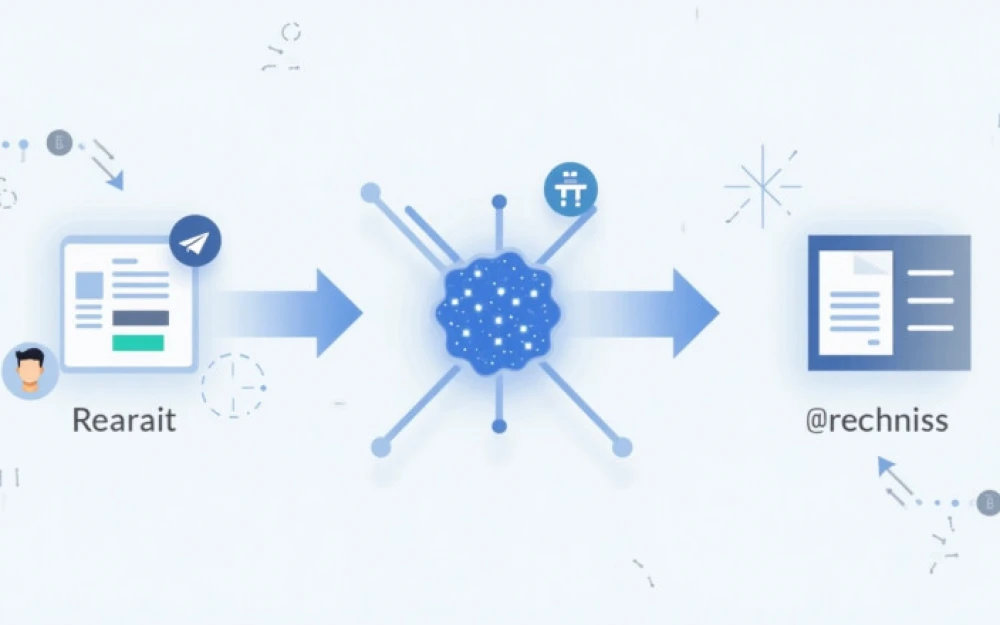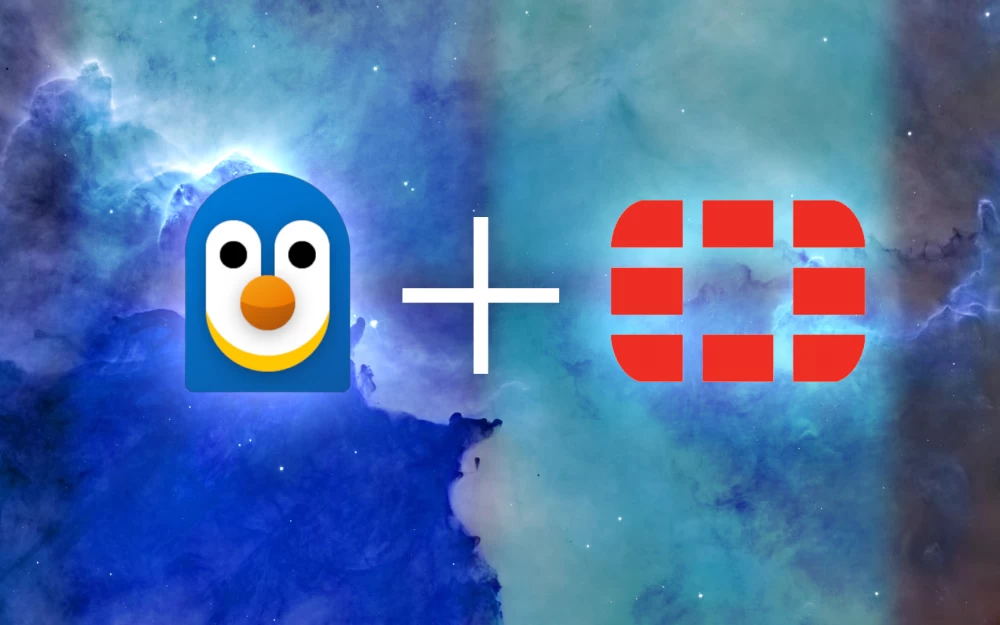- AI
- A
What are AI agents: how they work and why they are important
AI agent is an intellectual system capable not only of responding to requests but also of setting goals, planning actions, and adapting in the process. Unlike traditional chatbots that follow strictly predefined commands, the agent operates autonomously, similar to a virtual employee. Upon receiving a task, it breaks it down into stages, selects tools, analyzes the result, and adjusts the strategy if necessary.
Why are they needed?
People are good at creative tasks but fall short when it comes to processing large data, working 24/7, and accounting for numerous variables. AI agents solve four key problems:
They unify disconnected systems. For example, instead of manually gathering data from various sources (security logs, customer databases), the agent will link them together and generate a complete report.
They work 24/7. Automatically fixing IT system failures, processing orders, or monitoring sensor readings without fatigue.
They handle complex scenarios. Managing energy grids during emergencies, forecasting product demand considering dozens of factors, or optimizing logistics in real time.
They adapt instantly. For example, anti-fraud systems in banks update rules between transactions to block new fraud schemes.
How AI agents differ from regular AI models
Regular AI models work on a "query-response" scheme: the user inputs text — the system generates a response but doesn't remember the context or act autonomously.
An AI agent is the next level, it:
Breaks tasks into stages on its own and adjusts strategies;
Remembers context (user preferences, past mistakes);
Integrates with APIs, databases, and other programs;
Learns from its actions.
For example, you ask an AI model: "What's the weather in Moscow?" → it replies with text. But you tell an AI agent: "Book tickets to Moscow for the weekend" → it searches for flights, compares prices, books tickets, and adds the event to the calendar.
Simply put: AI agent = AI model + bridging code + tools + active memory.
How AI agents work
Autonomous systems perform complex multi-stage tasks based on four components:
Personalized data (context and knowledge).
Memory (saving and using information).
The "Feel → Think → Act" cycle (decision-making logic).
Tools (interaction with external services).
Let's break down each point in detail.
Personalized data
An agent cannot work without information. Depending on the task, data can be embedded in different ways.
Search-augmented generation (RAG — Retrieval-Augmented Generation). The agent searches for information in connected knowledge bases (documents, websites, corporate repositories). The data is transformed into numerical vectors (embeddings) for quick retrieval. When a query comes in, the system finds relevant fragments and incorporates them into the model's context.
Prompts. Context is manually added to the query. For example: “You are a lawyer at company X. A client asks about contract termination. Respond based on the Civil Code of the Russian Federation, article 450.”
Fine-tuning. The base model (for example, GPT) is retrained on specialized data. This allows embedding knowledge into the model itself. For example, a medical AI trained on medical histories and scientific articles. A banking chatbot knows all the rates and loan conditions.
Training a specialized model. If the task is highly specific (for example, analyzing X-ray images), a separate neural network is created.
Custom model from scratch. The company develops its own neural network for specific needs. This is used in rare cases (for example, military or scientific AIs).
Memory — so the agent remembers the context
Without memory, the agent would start from scratch every time. However, it has memory, and it adapts to the user's behavior to avoid repeated questions, such as: "Are you still not eating nuts?".
There are three main types of memory.
Vector databases. Information is stored in the form of numbers (vectors). The search is not done by keywords but by meaning. For example, the user says: “I don’t eat meat” → the agent stores this in the vector DB and automatically excludes meat dishes when ordering food. Used in personal assistants and recommendation systems.
Knowledge graphs. Data is stored in the form of relationships: “Object → Relation → Other object”. “Yulia → works at → Company X”, “Company X → uses → CRM system Y”. Used for searching for complex dependencies (for example, in medicine) and social network analysis (community detection).
Action Logs. The agent records all its steps. If something goes wrong, it analyzes the errors. For example, a payment fails → the agent tries another payment method. API error → reverts changes and notifies the developer.
Cycle “Feel → Think → Act”
This is the engine of the agent. It works in an endless cycle:
Feel. The agent receives data:
Text query (“Order pizza”);
Sensor signal (temperature dropped below zero);
New email or notification.
Think. The AI agent analyzes the context, breaks the goal into sub-tasks, and assesses risks. For example, there is a task: “Deploy a new version of the app” → check tests; ensure servers are free; prepare rollback in case of failure.
Act. The agent sends a response to the user. It calls an API (for example, payment via YKassa) and launches another process.
DevOps agent:
Feel: new code in the repository.
Think: checks tests and dependencies.
Act: deploys the update or reports an error.
Tools — how the agent interacts with the world
The agent is not limited to text. It can:
Send emails (Mail.ru, Yandex.Mail API).
Work with databases (SQL queries).
Control programs (Bitrix24, VK Teams, 1C).
The history of agents began in the 1950s
1950s: Logic-Theorist (USA) vs. “Cybernetics” in the USSR
In 1954, the famous Georgetown Experiment took place in the United States — the first public demonstration of machine translation, where the IBM 701 system successfully translated more than 60 Russian sentences into English.
Meanwhile, in the USSR, under the leadership of A. A. Lyapunov, machine translation algorithms were being developed — automatic translation of scientific texts from French to Russian using dictionaries and grammatical rules. These works laid the foundations for natural language processing (NLP).
1970s: MYCIN (USA) vs. DIALOG (USSR)
While in the USA, MYCIN was diagnosing medical conditions and recommending antibiotics, in the USSR, in the 1970s, under the leadership of academician Viktor Glushkov, the expert system DIALOG was developed — a revolutionary AI development for its time.
It could conduct meaningful dialogue in Russian, analyze complex queries, search databases, and was intended for medical diagnosis tasks. In 1976, based on it, a portable diagnostic device for the BESM-4M computer was created, capable of learning during operation.
1980s: XCON (USA) vs. SIGMA (USSR)
The American XCON configured DEC VAX computers. Meanwhile, the Soviet SIGMA, developed at the Cybernetics Institute of Ukraine, was a comprehensive computer-aided design (CAD) system for creating complex technical devices — from industrial machines to electronic circuits.
It used similar expert rule principles but was applied in the Soviet industry.
1990s: Deep Thought (USA) vs. Kaissa (USSR)
The Deep Thought supercomputer for chess by IBM, the predecessor of the famous Deep Blue, appeared.
However, before its creation, there was Kaissa — the world's first computer chess champion, created in the USSR in the 1970s.
Kaissa analyzed 10,000 opening variations, filtered weak moves, used bitboards. The program calculated moves in the background, applied a "zero move" for fast evaluation, and smartly distributed time for thinking.
Subsequently, the algorithms of the Soviet Kaissa became the basis for commercial chess programs sold in the West.
2010s: Watson/AlphaGo (USA/UK) vs. Rostech and Yandex (Russia)
IBM's cognitive system Watson won the popular American TV quiz show Jeopardy! (similar to the Russian "Svoya Igra"), where it analyzed questions in real time, processed natural language, and found answers in large data sets.
DeepMind's AlphaGo neural network sensationally defeated the world champion in the strategic game of Go, showcasing new possibilities of machine learning.
Russian developers were not left behind. In 2017, Yandex launched its voice assistant "Alice," which supported complex dialogues in Russian and understood the context of conversations.
Rostech actively implemented advanced AI technologies in the defense sector, developing autonomous combat drones and next-generation air defense systems.
2020s: GPT-3 (USA) vs. ruGPT-3 (Russia)
GPT-3 OpenAI (2020) — a language model with 175 billion parameters. RuGPT-3 from Sber (2021) — its Russian-language counterpart, which was used for text generation and data analysis. Later, YaGPT from Yandex and a specialized AI for cybersecurity from Kaspersky Lab appeared, capable of detecting unknown threats without pre-set signatures.
2024: PharmaAI (Global) vs. RFarmAI
The PharmaAI platform uses machine learning algorithms to predict biochemical interactions and optimize clinical trials. The system accelerates drug development by 10-100 times.
In Russia, the tech startup "Ensil" developed an AI-based platform that reduced the search and testing of promising molecular compounds from several months to just a few days. Meanwhile, the "BioAI TGU" system analyzes more than 10,000 compounds for antimicrobial activity daily, helping to combat antibiotic resistance.
Future Trends
AI agents are rapidly evolving. Here are the technologies that will define their future.
Multimodality. The combination of text, audio, and visual data for deeper understanding.
Self-improvement. AI agents require fine-tuning by humans, but in the future, they will be able to:
automatically find errors in their work and fix them;
optimize code for greater efficiency;
generate new training data (for example, create simulations for training).
Edge AI. Currently, most AIs work in the cloud (data is sent to the server → processed → returned). In the future, computations will take place directly on the device.
Explainable AI (XAI). Right now, AI often works like a "black box": we see the result but don’t understand how it was obtained. In the future, agents will be able to:
Explain their conclusions ("I recommend this course because you watched similar lectures").
Show their logic in an understandable format (graphs, chains of reasoning).
Warn about uncertainties ("I’m not sure about this diagnosis, additional tests are needed").
Agent Collaboration. Several AIs will work together (for example, one analyzes the market, another negotiates, and a third monitors the budget).
Conclusion
Previously, agents only worked based on strict rules written manually by humans. Training took months and required tons of manual adjustments. Now, the necessary technological foundation has appeared: powerful LLMs, distributed computing, and a developed API ecosystem. A developer can create an agent that: understands new situations by itself, doesn’t require manual programming of each rule, and learns faster and cheaper.










Write comment